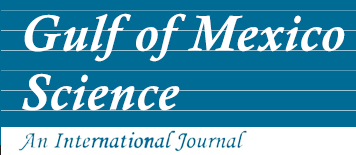Alternate Title
Comparison of Ichthyoplankton Sampling Conducted by the State of Alabama and the National Marine Fisheries Service During Southeast Area Monitoring and Assessment Program Fall Plankton Surveys
Abstract
Data on the abundance and distribution of the early life stages of fishes were collected by the Alabama Department of Conservation and Natural Resources (ADCNR) and the National Marine Fisheries Service (NMFS) between 1984 and 2007 during Southeast Area Monitoring and Assessment Program (SEAMAP) cooperative resource surveys in the northern Gulf of Mexico. The ADCNR collected samples from various locations inside and outside Mobile Bay, while the NMFS collected samples farther offshore at four standard SEAMAP grid stations near the Alabama coast. We compared catch data on larval and juvenile fishes, along with environmental information, from a total of 225 neuston samples between the two sampling areas. Larval assemblages and diversity parameters varied between ADCNR and NMFS sampling sites, reflecting differences in environmental conditions. A less diverse assemblage dominated by estuarine taxa, including engraulids, sciaenids, gerreids, and clupeids, was found at ADCNR sampling locations, whereas a more diverse marine assemblage, including lutjanids, carangids, labrids, monacanthids, and scombrids, was observed at NMFS sampling sites. Larvae of red drum, Sciaenops ocellatus, an important federally managed species, were more prevalent at the ADCNR sampled sites than at the standard SEAMAP stations sampled by the NMFS near Mobile Bay. However, over the entire SEAMAP survey area, catch rates of red drum larvae at shallow (<26 m) SEAMAP stations were comparable to, or even higher than, those observed at the ADCNR sites.
Recommended Citation
Schobernd, C. M., M. Van Hoose and J. Lyczkowski-Shultz.
2011.
Comparison of Ichthyoplankton Sampling Conducted by the State of Alabama and the National Marine Fisheries Service During Southeast Area Monitoring and Assessment Program Fall Plankton Surveys.
Gulf of Mexico Science
29
(1).
Retrieved from https://aquila.usm.edu/goms/vol29/iss1/3

